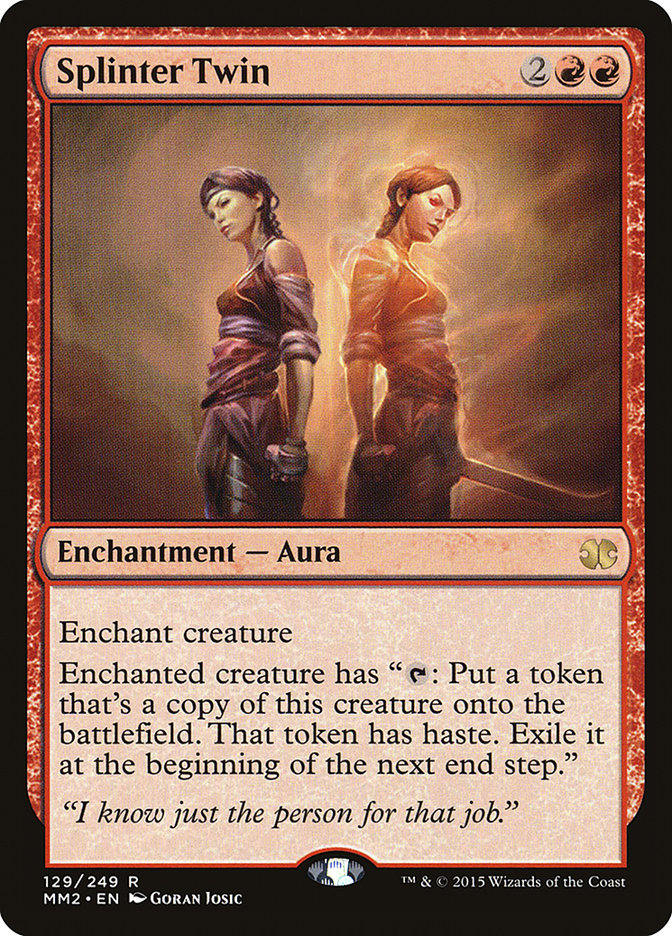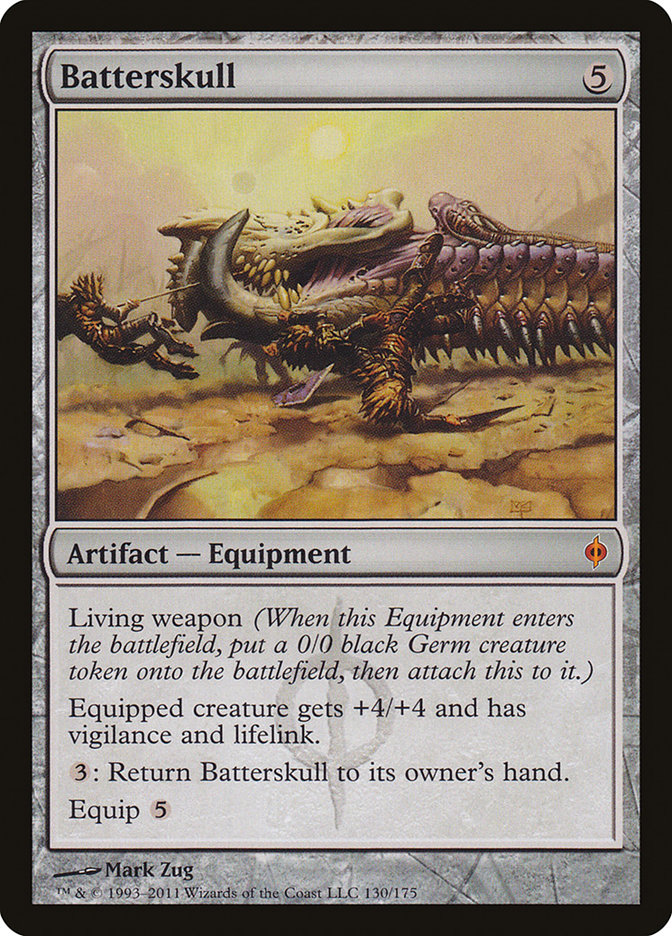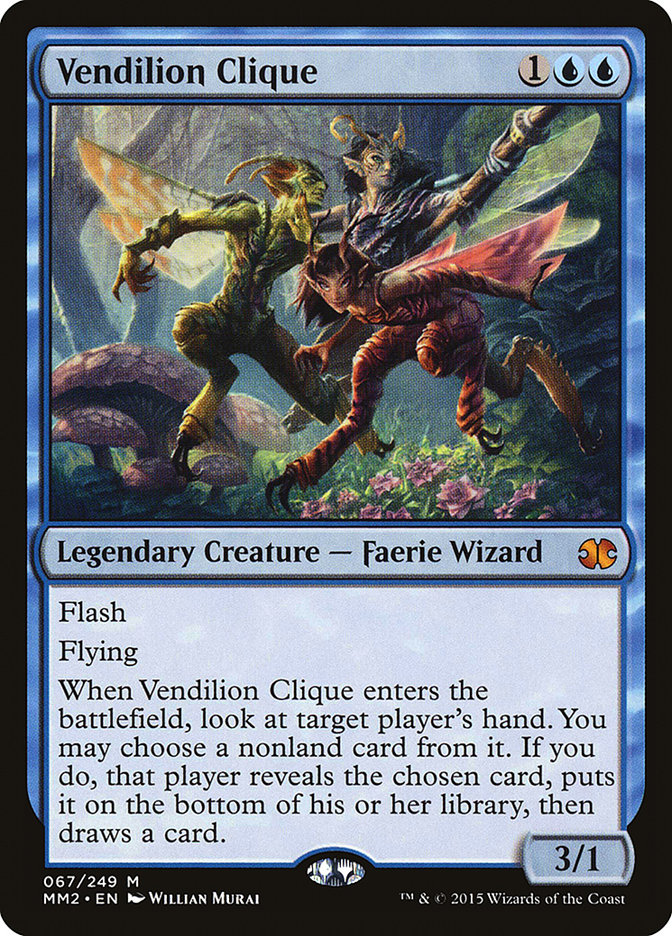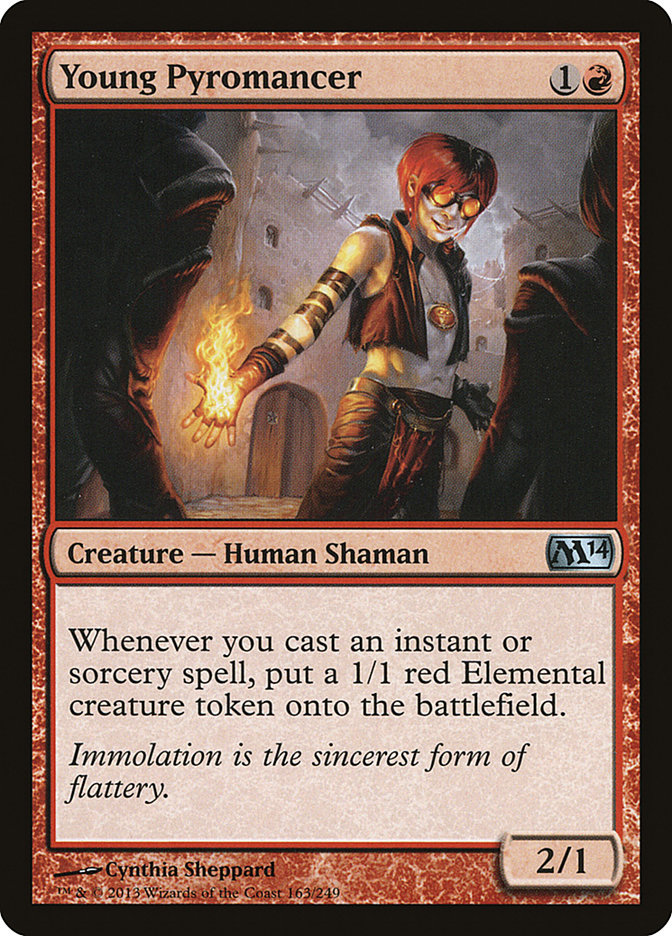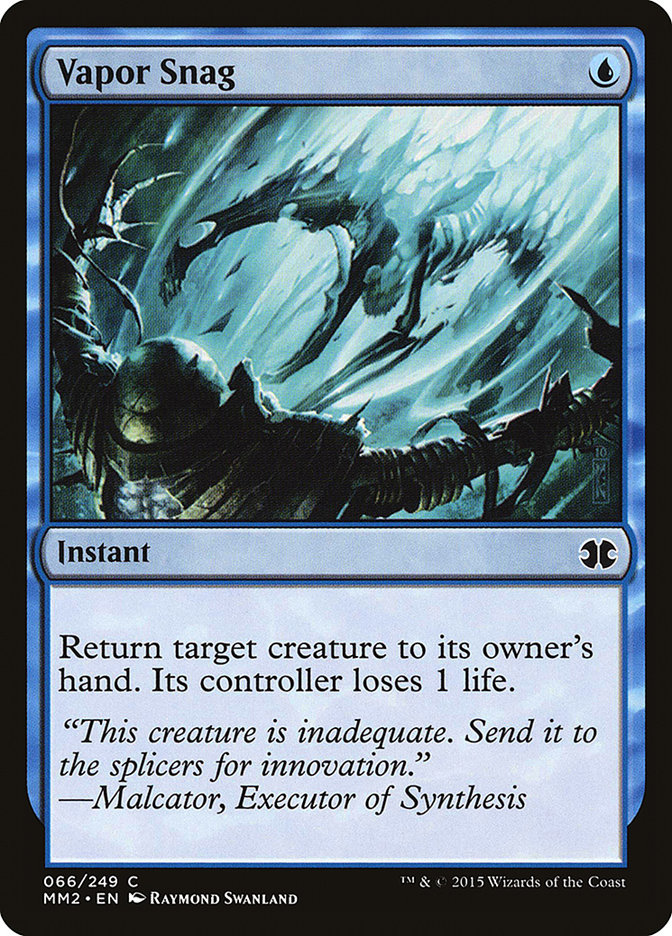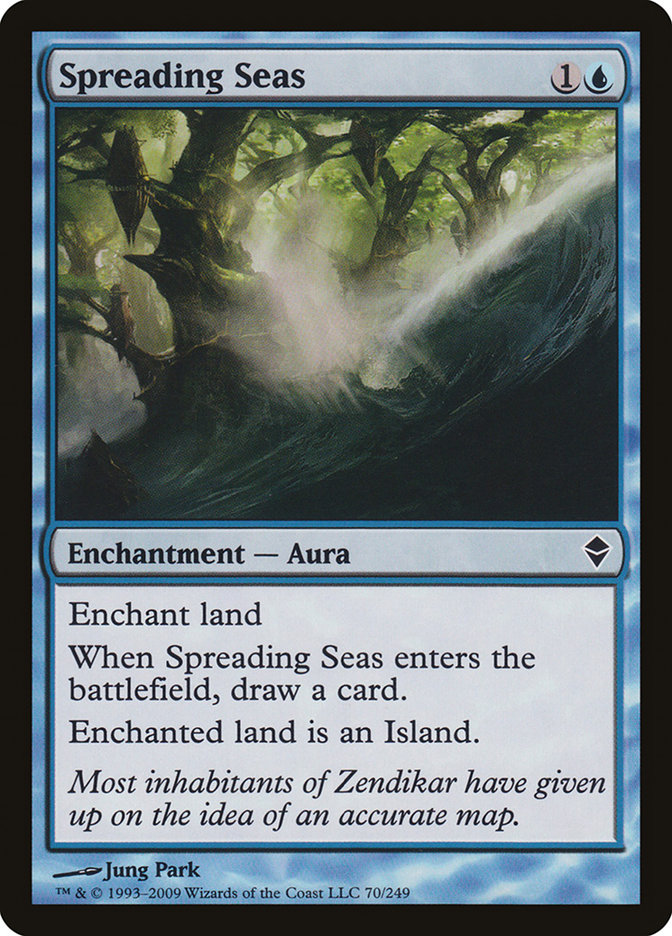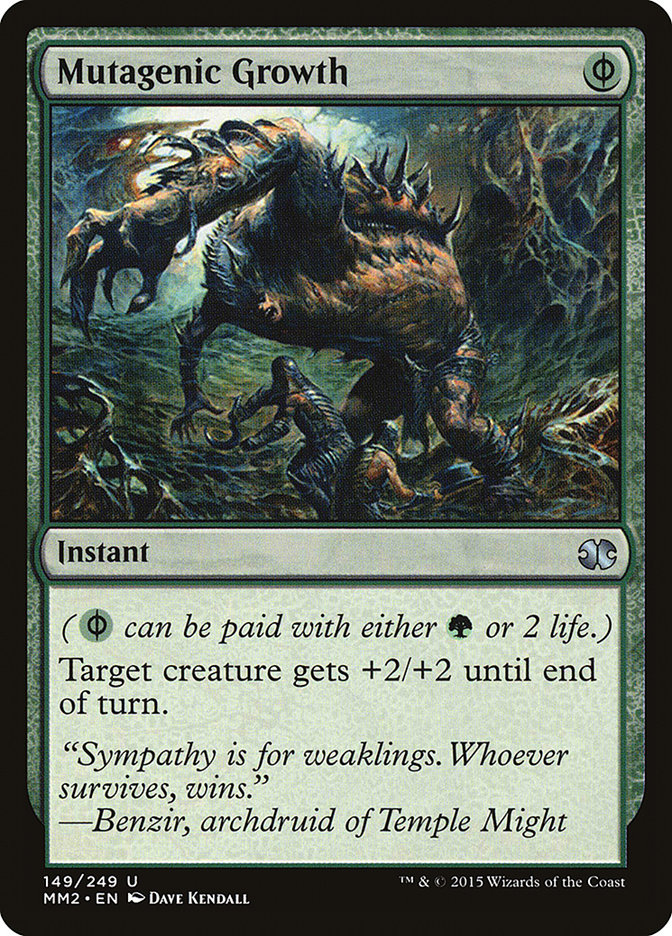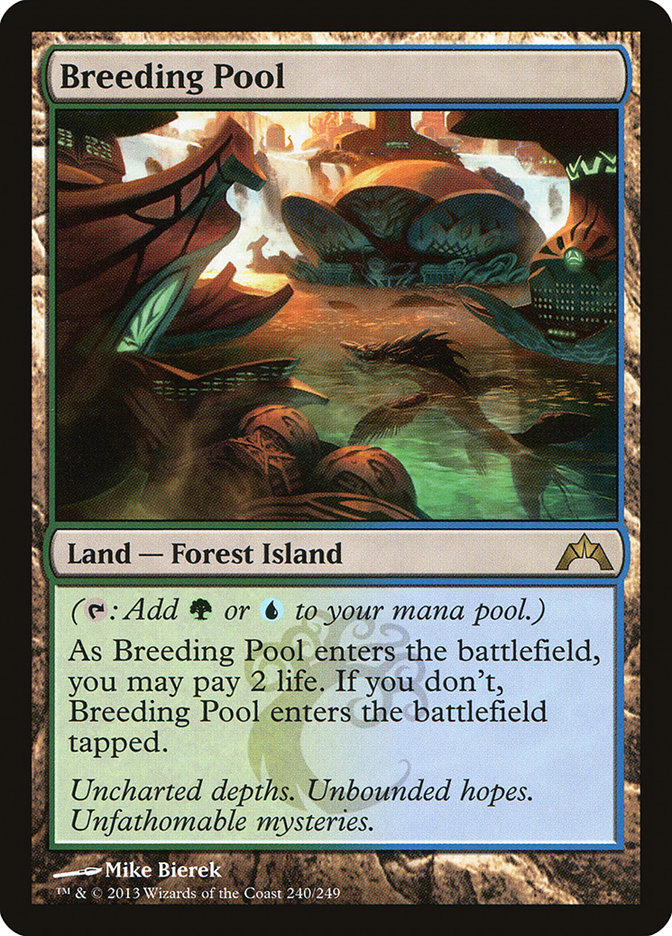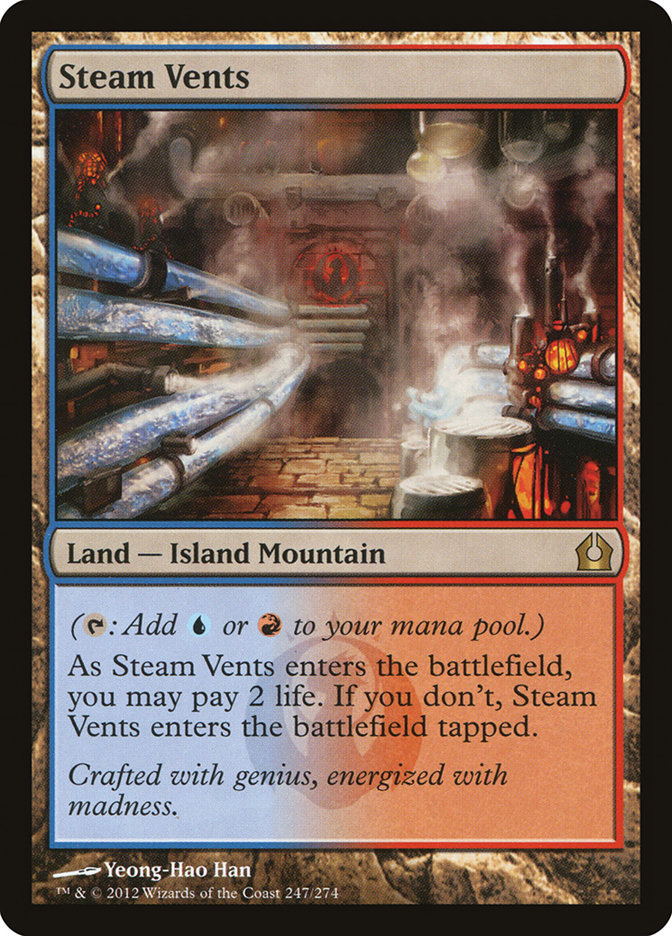It’s that feeling you get, knees shakin’ and hearts breakin’, when someone takes away something you love and buries it in the ground. It’s good for the game, they said. It’s an end of an era, they said. Yeah, we’ll see.
They stole my baby, so I cut out their heart.
Creatures (15)
Lands (20)
Spells (25)

“This deck sucks.” – Brad Nelson, 2016
In a way, Brad is right. This deck does suck, but only because it is the predecessor to something much greater. But even a bad deck, or a flawed deck, can win. The strength of Temur Delver is that it is tricky, and tricky decks tend to prey on players who are less familiar with the format. It is incredibly easy to make a mistake against a deck like Temur Delver because it puts you under a lot of pressure, and you can leverage that pressure to make people react how you want them to react.
Much like Temur Twin, a deck I championed long ago, Temur Delver will force their hand. They will play their removal spells when you want them to, and they will go for their combo when they are not entirely ready, because they have no other choice.
I have a history of doing very well with decks that I enjoy, and this time is no different. On paper, some card choices might not make the most sense. In practice, you may find yourself making some odd choices to put the pieces together. But in theory, this deck is very good if you know what you’re doing. In a lot of ways, I built this Temur Delver deck to reflect U/W Delver when it was in Standard. It plays out games in a similar fashion, though hilariously it is less consistent thanks to the lack of Ponder.
Modern is a hostile format, full of hyper-aggressive strategies, brutal combo decks, powerful midrange threats, and a host of disruption that can only be classified as “medium.” No Force of Will. No Daze. No Stifle. Not even a Wasteland. Instead we get garbage like Ghost Quarter and Tectonic Edge. The great card selection is also banned because it made combo decks a bit too consistent, which I agree with in theory. Ponder and Preordain made a lot of games play out the same way. Combo decks would be able to assemble some monstrous thing only a mad scientist could love and find the necessary protection in the meanwhile. These days, a single, well-timed Thoughtseize can end the game before it even begins, because the card selection isn’t powerful enough to find the redundant combo pieces.
The best combo decks in Modern, historically, have been the ones with an alternate game plan. This applies mostly to Splinter Twin but holds some truth for a few other archetypes. It should be no surprise by now that U/R Splinter Twin was able to morph into a potent control deck depending on the matchup. Finishers like Keranos and Batterskull were not too hard to find through Serum Visions and games going long, thanks to a host of removal and card advantage.
In the same vein, Temur Twin was able to become a tempo-based deck that put Tarmogoyf to great use. In a lot of ways, this deck is just Temur Twin after sideboard without the Splinter Twins or awkward combo creatures. If you were a fan of that deck, you should enjoy playing this one quite a bit.
I’ve gotten a lot of questions about what changes I would make to the deck, if any. The first thing I can tell you is that Delver of Secrets is not the best in Modern. Without a way to flip it easily and a strong need for higher threat density due to the overwhelming amount of removal, it is nowhere near as powerful as it is in Legacy or once was in Standard. Unfortunately, it is probably not good enough for this deck and not good enough for Modern, because it won’t consistently flip. A cheap threat that you can protect while applying the beatdown is exactly what you need in a hostile metagame, but I don’t think Delver is the right candidate.
To that end, I’ve thought about making the deck lean a bit more on more expensive threats, focusing less on Delver of Secrets and more on Tarmogoyf or even Vendilion Clique. Since Delver of Secrets won’t flip naturally all that often, it is a threat that most decks can ignore. Even if you are able to flip it, the disruption available to you in Modern is not exactly stellar, and having an inconsistent threat that you can’t protect is less than ideal.
Because of this, Tarmogoyf is a bit more vulnerable than I would like, as it becomes the emphasis of the game, and where your opponent’s removal will likely target. In Legacy, opponents are forced to deal with Delver, which usually leaves one of your bigger threats alive at the end of everything, but as much as I would like it to be, that just isn’t the case here.
With that said, there were some games I played where having a one-mana threat was all I wanted, regardless of its text. And there were games where Delver flipped on turn 2 and won the game by itself. In those instances, Delver is the best card for the job, but there were plenty of other times where I just cast Merfolk of the Pearl Trident, and it felt awful. Though I still usually won those games, I would have rather drawn virtually any other card in Magic (except Rakalite). I thought about something like Zurgo Bellstriker or Monastery Swiftspear as a replacement, but I think it is either Delver or bust.
Why Not Infect?
For months, I haven’t really given much thought to Modern, mostly just resigning myself to playing some form of Infect. But the problem with Infect is that the games rarely come down to the decisions you’re making, either in deckbuilding or playing, and instead the result depends on how prepared your opponent is. If they bring enough copies of Grim Lavamancer, Izzet Staticaster, Gut Shot, or Kolaghan’s Command to the table, there isn’t a whole lot you can do.
Sure, you can draw well, and beat just about any deck with Infect, but the fact of the matter is that I want to control my own destiny. In formats like Modern and Legacy, most of my success has come when I put pressure on my opponent while simultaneously being able to dictate the pace of the game. When you play a linear deck, you will have linear draws that are easy to pick apart given the right tools. When you play a deck like Temur Delver, it is much harder to take advantage of an inherent weakness.
At the moment, Modern is being defined as the format where you can “play whatever you want.” To an extent, this is true. There are so many viable options that it can be overwhelming, both in playing and in building your deck and sideboard to cope. I am aware that it is not an easy task to build your deck or sideboard when there are so many things to fear. When we try to beat everything, we often end up beating nothing.
The best thing you can do in Modern is have a flexible strategy, because that allows you to adapt to your opponent more fluidly. At any given time, Temur Delver can play like a control deck, a tempo deck, or an aggro deck. Jamming Snapcaster Mage into play with no targets is not something you do often, but figuring out the right times to do it will be the difference between winning and losing a match. From the other side of the coin, figuring out when it is correct to jam Tarmogoyf into play on turn 2 or hold up Remand is equally as important.
There is no cookie-cutter setting on Temur Twin, or any deck that has a wide range of flexibility.
The Good News
Tarmogoyf was phenomenal, as usual. A cheap threat that hits hard and rarely dies to Lightning Bolt is exactly what the doctor ordered for a deck like this. It is the backbone of tempo decks in Legacy, so why shouldn’t it be the same for Modern? It is the most efficient threat in history, and there is a reason why it maintains such a big price tag after multiple reprints.
Before you ask, there is no reasonable replacement for Tarmogoyf. It is what makes Vapor Snag a playable Magic card. It is what turns Snapcaster Mage into a relevant body. It is the card that closes the door on combo decks before they can assemble their combo. There are creatures that can play a similar role in the deck, but it will not be the same, and you will feel the difference.
This one is tricky to explain, but I’ll do my best. The reason for the singleton Young Pyromancer is because I own exactly one Japanese copy. But seriously, the card is great when you draw it, though I don’t think this version wants multiples. You aren’t drawing a ton of cards, and you’re generally resigned to making two or three tokens at the maximum. If you play too many copies, it will clog your draw. Unlike Tarmogoyf, it is a high-priority target that falls to Lightning Bolt, though usually gaining some amount of value.
I initially wanted another creature that wasn’t a third Hooting Mandrills, as it can be a bit awkward in multiples. What I got was pleasantly surprised by how happy I was to draw it every now and then. In the future, a second or even third copy might be fine, and especially so if we move away from Delver of Secrets.
I didn’t think Vapor Snag would be all that impressive, given that the format is flush with cheap creatures. But understanding just how easy it is to swing a game by bouncing a two-mana creature or saving your own Snapcaster Mage from a Lightning Bolt will make you a believer. I didn’t draw Vapor Snag very much in the first few rounds of the tournament, but as I played the deck it became clearer just how important it is for a deck like Temur Delver.
I boarded this card in almost every round. It added a lot to the “control” gameplan while also giving me a way to disrupt slower opponents who relied heavily on awkward mana. Solving the issue of creature-lands is also important, as shutting down a Raging Ravine or Celestial Colonnade could be the difference in winning or losing the long game. Drawing a card in the process of disrupting your opponent is a boon.
Against decks like Burn, Spreading Seas is an absolute nightmare. They have so few colorless symbols in their deck that Spreading Seas is effectively Stone Rain that draws a card. If you’re behind on board, it is unlikely that Spreading Seas will do all that much against them, but you have enough removal and counterspells, you should be able to slow them down long enough to make Spreading Seas effective and eventually close the game with Tarmogoyf.
If the deck is to move away from Delver of Secrets, Grim Lavamancer has my vote for a replacement one-drop creature. It doesn’t play the tempo game all that well, doesn’t attack for very much, and plays poorly with Hooting Mandrills, but there are many decks where Grim Lavamancer on the first turn spells doom. In the current version of the deck, it is important to have cards like Grim Lavamancer that can come in against a variety of decks. Flexible sideboard cards allow you to drastically change your strategy between games, and cards like Grim Lavamancer make it a seamless transition.
The Bad-ish Stuff
As we’ve talked about already, Delver was very hit-or-miss. I’ve never played with a card that I simultaneously love and hate as much as Delver, but that’s the cost of doing business. In some games, and some matchups, there is no other threat you want. Evasion and a cheap cost are huge against a lot of decks in Modern, but some people might not be able to handle the swings. I wouldn’t blame you for cutting it, but I still don’t know if it is right to do so.
Moving forward, a version without Delver will be much different, even if most of the cards stay the same. You won’t be able to see it on paper or in play right away. But the more you play with the deck, you’ll feel the loss of your early threat. It’ll make cards like Vapor Snag and Spell Pierce a little worse. The price to pay for cutting Delver will be big, but that doesn’t mean we should stick to Delver because it “feels” right. I think we can do better, but it might take some time to find it.
I love me some Phyrexian mana spells, and I don’t think Mutagenic Growth is a bad card. I just didn’t draw it very much, though I still like it in theory. It can save Tarmogoyf from Dismember or an early Lightning Bolt most of the time and can give you a little bump in combat if necessary, both in extra damage as well as making your creature eat theirs whole.
I think Mutagenic Growth likely works better when your major threat is something with hexproof, like Geist of Saint Traft, but I wouldn’t be surprised if I’m wrong here and Mutagenic Growth is actually great.
I have never seen a card be so great and so terrible at the same time. Burn and Affinity, as well as other decks full of cheap threats, make Remand downright embarrassing at times. But Remand is a necessary evil that plays a huge role against a number of other strategies. It is not something you can cut, but I did want to comment on the strengths and weaknesses of the card.
While Remand is the current frontrunner in the deck, I could see something like Mana Leak making a comeback. It might solve some of the problems the deck has, where Remand is only there to buy you time. The extra card drawn and their turn wasted is precious for a tempo deck, but if the deck moves away from Delver (I’m sure you can see a theme here), then trying out a different counterspell is key.
While obviously a necessary evil, I don’t think we need extra copies of both Breeding Pool and Steam Vents. Four shocklands is likely enough, as I found myself fetching basic lands nearly every match. With Phyrexian mana spells in the deck, your life total can only take so many hits before you lose to yourself. I would like to try out some copies of Sulfur Falls or Hinterland Harbor, and possibly Wandering Fumerole if the deck begins to lean towards a better mid-game.
This Deck’s Future
This deck won’t survive in the long run. It can be dismantled by most Jund and Abzan decks and loses a lot of ground against people who know what’s coming. The element of surprise was pretty big for me in this tournament, and I got a lot of free wins because people didn’t know what to play around or how to play around it. Much like Splinter Twin at the beginning of the Modern format, it slowly gets worse over time if people start playing against it a lot.
I will say that I am not salty over the banning of Splinter Twin. If anything, I am relieved that I don’t have to play with it in my decks anymore. It opens up the format a bit and makes room for all sorts of other Snapcaster Mage decks. In a way, Splinter Twin was a lot like Bloodbraid Elf, in that everyone knows that it isn’t the best card in the deck, but banning it will take a bit of pressure off the opponent and make the deck a little more manageable. Everyone knows that Snapcaster Mage is the best card in these decks. But if Snapcaster Mage ever goes the way of Deathrite Shaman, then decks like this will no longer be viable.
What I love about Snapcaster Mage, in general, is that it is only as good as the tools you surround it with. It can be phenomenal in both tempo and control strategies, but only as long as you can make the body relevant.
This deck is not perfect, but it is exactly the type of deck I love to play. And if I’m being honest, I didn’t think I would win the tournament. I built the deck out of my box of “playable Modern cards,” as well as a few stragglers that I just so happen to favor (I’m looking at you, Mutagenic Growth).
#PTOGW will feature the Modern format. I’m hoping that someone takes this starting point and figures out the best direction for the deck. With Splinter Twin out of the format, we have a lot of room to explore. It should be fun!


